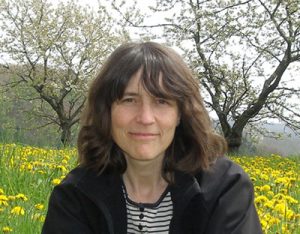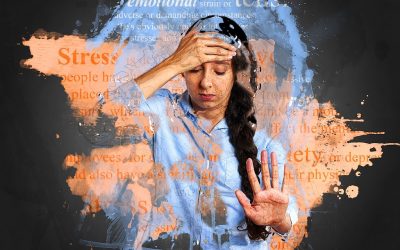Nature Notes:

Spring Equinox
Spring Equinox is here, and it is time to ponder the miraculous power of regeneration. Persephone has returned to the upper world and life re-awakens. Buds swell, birds sing, and trees burst into flower. There is joy and exuberance – despite the craziness, suffering and sorrow we witness every day.
At the Spring Equinox, light and dark hang in the balance. From now on, the sun gathers strength with every passing day. Mother Earth, violated and marred by war, yet again, dons her spring garment and gradually turns the land lush and green.
Spring Equinox – Focus on what matters most
The garden calls, and the soil eagerly receives the seeds. Are you tending your garden? What will you grow this season? Where is your energy going and what habits will you cultivate?
The garden is a physical space, as well as a metaphorical one. The inner ‘garden’ also needs attentive care, weeding, pruning and nurturing.
At home, it is time to clear out the winter dust. Spring-cleaning, painting, and decorating are on the agenda.
Likewise, the body also needs cleansing and care. Boost your energy and vital spirit with fresh vitamins and the nutrients of early spring herbs. When the body is strong, so is the mind!
Spring Equinox – Celebrate life
Get ready for the season, invite the sunshine in, and make the most of these fleeting joys! Life becomes infinitely rich when we walk mindfully and celebrate each flower or butterfly we meet along the way.
Focus on what matters most to you and make your intentions clear. Life is short and precious. The power to make your garden flourish lies in your hands. Use it.
The Spring Equinox is a time of new beginnings. Let’s celebrate the mysteries of rejuvenation and eternal return, tender yet charged with the energy of daring and boldness.
Current issue

Rosemary – Rosmarinus officinalis
Most of us know this woody, aromatic bush as a culinary herb, but in fact, Rosemary is so much more than that. It has some quite remarkable properties that are well worth remembering.
As a kitchen herb, Rosemary is an old stand-by: Rosemary potatoes, Rosemary chicken, Rosemary salt, Rosemary lamb, or Rosemary fish are all familiar menu items. The needle-like leaves have a highly aromatic, somewhat medicinal scent. The flavour is distinctive, somewhat bitter, and resinous, which perfectly complements fatty foods. It ‘cuts through’ the grease. This is why it is used to flavor greasy meat and fish dishes and to aid digestion. Rosemary acts as a token apology to the liver.
Rosemary, which has long been known as Rosmarinus officinalis, was recently assigned to the Genus ‘Salvia’. That means, it is botanically grouped with the sages. However, the old name is still acceptable, but keep the name change in mind to avoid confusion.
Although it is an herb of the mint family (Lamiaceae), its thin, spiky leaves lend it the appearance of some kind of dwarf conifer. Rosemary is at home in the semi-arid climate zone of the Mediterranean coastal region. It commonly grows in the garrigue, the shrubland that covers the lower hills. Its scientific name – ‘rosmarinus’ means ‘Dew of the Sea’. It indicates that this herb likes to be ‘kissed’ by the salty mist coming in from the sea. Others have suggested that the name perhaps alludes to the light blue flowers. A bush that is profusely covered in flowers has the appearance of sea foam on the crest of a wave. Thus, Rosemary has also been linked to the Greek Goddess Aphrodite, who was born from the foam of the sea.
In the Mediterranean, it is one of the earliest flowers to appear in the New Year. Its pale blue flowers blush the wild coastal hillsides, spreading an aromatic scent that awakens the sleepy bees. Rich in nectar, Rosemary is one of their first sources of nourishment. The highly aromatic Rosemary honey is sold at local markets as a highly prized regional specialty.
Rosemary’s intense fragrance and aromatic flavor are due to essential oils, which are obtained not from the flowers, but from the needle-like leaves. As a key ingredient of the ever-useful herb blend known as ‘Herbes de Provençe’ it is a quintessential item on the herb shelf.

Medicinal uses of Rosemary
This essential oil is also responsible for its medicinal properties. Rosemary oil stimulates blood circulation, particularly to the head. It has a beneficial effect on memory. In herbal lore, this property is associated with the remembrance of loved ones, and friends, and those who have recently passed away.
Rosemary’s bitter principle aids digestion. It ‘warms’ the stomach and stimulates the liver and gallbladder. It helps the body to break down fats and improve digestion.
It also shows anti-viral, anti-bacterial and anti-fungal properties. Externally, a Rosemary infusion can be used to cleanse badly healing wounds.
Cooking with Rosemary
Rosemary goes great with roasts – whether you are roasting a goose, lamb chops, or a pan full of root vegetables, a sprig of rosemary transforms the dish and adds a complex, slightly bitter and highly aromatic flavor.
Purification
Rosemary has also long been used as incense, particularly in combination with Juniper berries. This tradition has continued into modern times. It is still sometimes used to fumigate and purify the air in a patient’s room. It is also popular as a cleansing aromatic that is used in sauna infusions, or to scent bath oils and soaps.
Restorative
Rosemary’ is a tonic and restorative. Its stimulating action on the blood circulation and coronary function and can restore vitality and strength to convalescents or feeble children. In the past it was also used as an aphrodisiac that had the reputation to restore a dwindling manhood. Recent research has shown that Rosemary contains
Cosmetics
Rosemary can be added to home-made shampoos or hair rinses. It will stimulate the follicles and promote hair growth. In the ‘still room,’ its essence would have been added to skin tonics, lotions, and oils.
Rosemary Hair Rinse
The simplest way to let your hair benefit from the tonic power of Rosemary is to simply make a strong infusion of 1 tablespoon of dried rosemary leaves to 500 ml of water – infuse with boiling water and steep until it has cooled down, strain and massage into the scalp. Leave it for a few minutes, then rinse it out. It is best when prepared fresh, but it will keep for a few days in the fridge.
Rosemary Shampoo
Unscented shampoo bases are readily available at many stores these days. Get one you like and add a few drops of Rosemary Essential Oil to it.
Recommended for brown or dark hair as it will naturally darken the hair over time.
Plant Profile:

Foraging Chickweed
Chickweed (Stellaria media)
Once winter has settled in, foraging has come to a standstill. We have to rely on previously gathered supplies. Except, if you are lucky enough to live in a temperate climate zone, there may be at least one herb that defies the elements. You might have spotted it in your veggie plot: a little sprawling herb with heart-shaped leaves and star-shaped flowers that belongs to the Pink family known as Chickweed.
Chickweed is fairly hardy. It defies the elements and can pop up early in the year when other herbs are still asleep.
Chickweed is one of those herbs that gardeners love to hate. They try everything to get rid of this persistent ‘weed’ that pops up anywhere humans have toiled to cultivate the ground. It is only natural.
Chickweed is one of those herbs that blush at bare soil and quickly spread out to cover mother earth’s nakedness. Chickweed binds the soil, prevents it from washing away and drying out – the consequences of standard gardening practices.
Alas, as soon as this little healer herb appears, gardeners grit their teeth and start a crusade. How dare this audacious herb invade their plot?
But instead of battling it, you could welcome it as a gift. Chickweed is a blessing, not just for the earth but also for us. It is rich in chlorophyll, minerals, and vitamins that are sorely needed at this time of the year. And all we have to do is clip its tender tops.
Chickweed has a mild flavour and is incredibly versatile. It can be used like alfalfa to garnish sandwiches, soups, and salads. It can also be incorporated into omelets, fillings, sauces, dumplings, or quiches – the possibilities are endless. But it should always be used fresh and finely minced, as the stems can be somewhat stringy. When cooking with Chickweed, bear in mind that it cooks down to practically nothing in no time at all, so just add it at the last moment and don’t cook it for long. Overcooking would only diminish its benefits.
Chickweed also offers some valuable medicinal properties. The old herbalists describe its effect as cooling and soothing. They used it as an expectorant for afflictions of the upper respiratory tract, like an irritable cough. The same cooling and soothing properties also calm inflamed sores, rashes, itchy skin conditions, and burns. Traditional herbalists used it to make ointments and poultices for treating eczemas, boils, and abscesses.
Sometimes it is made into a tincture, but fresh works best. If you want to concentrate its effect, it can be juiced. But it does not keep very long. It can be frozen, but that will diminish some of its goodness.
Warning: some people have reported allergic reactions to Chickweed collected from chalky soil. Like many other members of the Pink family, Chickweed contains saponins, and these can be toxic in large quantities.
More articles:
Plant Profile: Aloe vera
Plant Profile Aloe vera – Aloe Vera is no longer an exotic stranger. It has found its way into all kinds of common household products from washing-up liquid to latex gloves, and even razors.
Gardening Jobs in June
If you thought that now the growing season is in full swing you can kick back and relax, you are mistaken. June is a rather busy month in the garden, especially if you want to continue harvesting veggies in the fall and winter.
Permaculture – Paradigm Shift for a Sustainable Way of Life
The paradigms of Permaculture, are based on abundance, cooperation, and sharing and seeks to restore rather than exploit ecosystems.
Plantains – Plantago sp.
As masters of adaptation, Plantains are ubiquitous. They have managed to eke out a living in almost every conceivable kind of habitat.
Dyeing Easter Eggs – Naturally
Dyeing Easter Eggs with natural colours is a lovely project to do with kids. Find out how to do it at home.
Natural Dyes – The Colours of Nature
The art of natural dyeing comprises a huge body of knowledge. It is a crafter’s plant knowledge that is passed on by using it.
Foraging Goutweed (Aegopodium podagraria)
Foraging goutweed is one of spring’s delights. It is plentiful, tasty and versatile! It can be used as a pot herb for soups, and fillings, or as pesto.
Sugar Maple – A Sweet Miracle
Sugar Maple is an iconic tree of the northeastern parts of the US. Its display of bright orange and red fall foliage is world-famous.
Happy Valentine’s Day
It’s Valentine’s Day – time to spread some loving. But will you say it with flowers, with chocolate, or a special Valentine’s dinner?
Victorian Flower Language
The Victorian flower language, also known as floriography, was a secret code used to convey your true heart’s desire, without making a sound.
Ways to cope with Stress and Anxiety
We live in stressful times and many of us are feeling anxious. This article outlines ways that can help you to deal with stress and anxiety
Foraging Wintercress – Barbarea vulgaris
Wintercress is winter-hardy and can be foraged during the winter. It is rich in vitamin C and A and used to be known as an ‘anti-scurvy’-herb.














